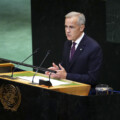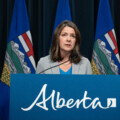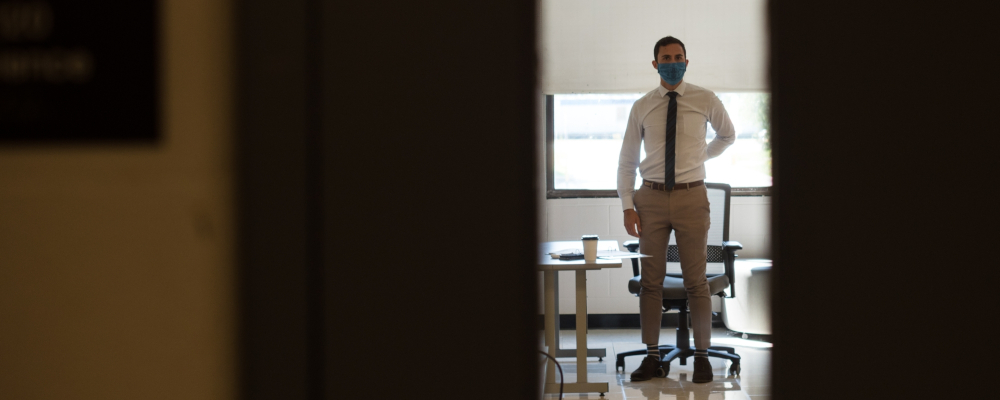Teachers on social media, often hiding behind anonymous names, are beginning to talk out-of-school with far more frequency. One of the better known and bravest, @TeacherGrind on Twitter, is grinding her teeth more than usual about the crushing burden of maintaining appearances two years into the pandemic.
Frontline teachers like @TeacherGrind are now speaking up about the fact that, in the absence of coherent and integrated policy, learning recovery is becoming their responsibility. “I have students who have missed every school day of school this year due to extenuating circumstances,” she reported, “and it keeps falling on the teachers to somehow support them independently.” Then, almost in desperation, she added: “This is why every district needs a remote option forever.”
Answering her cry, Nova Scotia high school arts education teacher Paul Syme (@symecreative) hit the nail on the head: “Class time is full and busy. Then, outside of class time is forfeited to communicating and planning for missing kids. This structured deficit needs to be met with a systemic remedy.”
Two full years into the COVID-19 pandemic, there is still no plan to address learning loss and move from assessing the collateral damage to planning for recovery. Speaking recently on TVO Ontario’s The Agenda, Western University education researcher Prachi Srivastava cut through the usual edu-babble: “I’m shocked at the lack of planning, at the lack of forward planning in the face of what is quite a predictable outcome,” referring to the short and long-term consequences of mass school closures.
When Srivastava speaks, education authorities should be listening and heeding her advice. She’s one of the few Canadian education researchers attuned to global education development and co-lead author of the June 2021 Ontario Science Table brief on the impact of educational disruption not only in Ontario but from province to province in Canada. Back in July 2021, she and the research team issued a follow-up report confirming the cumulative learning loss and social harms inflicted since March 2020 and recommending that, barring catastrophic circumstances, schools should remain open for in-person learning for the foreseeable future.
A pan-Canadian scan of Canadian K-12 COVID-related education plans conducted by Toronto-based People for Education and released in early February, after two years of disrupted schooling, came up virtually empty. While all provinces and territories have public health safety strategies for schools, few have anything approaching a vision or plan to manage, assess or respond to learning loss or the psych-social impact of mass school closures and none have allocated sufficient funding to prepare for post-pandemic recovery.
A near total lack of student data is seriously hampering our capacity to assess how the pandemic has affected student learning over the past two years. “One of the problems we have,” Srivastava told the London Free Press, “is that there is no baseline data.” That is confirmed, in spades, in the recent People for Education report. Only four of our 10 provinces and territories, British Columbia, Ontario, Quebec, and New Brunswick, are engaged (even in the 2021-22 school year) in any form of data collection, and it’s irregular at best.
As a G7 country, Canada is purportedly one of the seven most highly industrialized and relatively well-resourced liberal democracies on the planet, and it has, relatively speaking, one of the smallest cohorts of children, some 5.1 million, in elementary and secondary school. With all those resources and one of the most extensive educational bureaucracies in the world, it’s fair to ask why our school system came up short during the pandemic.
Four mass school closings in Ontario have cost K-12 students some 29 weeks of schooling since March 2020, roughly double the average lost time, 14 to 16 weeks, across all advanced industrial societies. While Ontario leads in weeks claimed by school closures, most other provinces are close behind, with Nova Scotia and New Brunswick, for example, checking in at 20 to 22 weeks of disrupted instructional time. In the case of Nova Scotia, it’s compounded by the fact that four to six additional days have been lost to storm day closures where teachers are not required to provide alternative instruction.
Suspending or curtailing system-wide student assessments has compounded the problem. With Ontario’s Education Quality and Accountability Office (EQAO) testing cancelled during the pandemic, there was no way to assess how that province’s two million students were performing or whether they were recovering.
The Ontario pattern was repeated elsewhere as provinces, one-after-another, abandoned large-scale student assessments and suspended high school examinations. Maintaining consistent and credible benchmark assessments would certainly have made logical sense and left us better prepared to plan for the recovery. While some provinces, including Ontario and Nova Scotia have restored testing in 2021-22, it’s going to be difficult to analyze without consistent baseline data.
School authorities have failed us during the COVID-19 pandemic and it will prove costly for the pandemic generation of children. A child who was in kindergarten in March 2020, is now in Grade 2 and will be in Grade 3 in September 2022, so pandemic closures will have cost them between 10 and 27 weeks of their schooling. Students in Grade 9 when COVID-19 hit will have had their entire high school years disrupted by closures and mostly ineffective online learning experiments.
Repeated pivots to emergency home learning were detrimental to school-age children and families, and education was used as a “pandemic control” instrument without sufficient recognition of the academic and social impacts on children and teens. Public policy devolved into complying with public health dictates, and responding—in ad hoc fashion on the fly—to educator and parent concerns, applying band-aid upon band-aid, from social distancing to bubbles to HEP filter units, to secure a modicum of consent, several times, to restart in-person school.
Serious research into COVID-19’s impact on student learning is gradually emerging and, given the preoccupations of our education schools, it originates mostly elsewhere. Studies in the United Kingdom during COVID-19 point to a learning loss of between two months and two years, depending upon the educational jurisdiction. One of the few Canadian studies, conducted by University of Alberta researcher George Georgiou, found that students in Grades 1 and 2 in Edmonton and Vermillion performed, on average, 8 months to a full year below grade level on reading tasks at the end of the last school year. More recently, a U.S. study, conducted from 2019 to 2022 by Amplify utilizing DIBELs assessments, found that more than one in three children from kindergarten to Grade 3 fell significantly short of their expected reading level without major and systematic interventions.
A more coherent, integrated, and responsive pandemic education recovery plan is now a matter of immediate necessity. At the risk of sounding like a broken record, the key components of such a plan, repeatedly articulated by Srivastava, me, and others, are hiding in plain sight. Such a comprehensive plan would consist of three main education recovery initiatives:
- Revamp the entire K-12 curriculum – recognizing that it’s a massive “catch-up operation” in which parts of the curriculum in each year need to be lengthened, some curriculum moved into the next grade, and other parts missed earlier integrated into the current grade.
- Boost core competencies and skills in reading and numeracy – close the basic skills gap while introducing pro-social skills throughout the curriculum for all children, focusing on the elementary grades.
- Implement targeted interventions – focusing on schools with the highest number of disruptions and infection rates, or large numbers of students from marginalized communities or special needs students.
Three years ago, Canadian K-12 education occupied a bubble and the architects of the current school system were fond of routinely referring to Ontario as a “world class system.” When the pandemic hit, prominent Canadian school promoters saw it as a golden opportunity to “build back better” with a focus on enhancing social and emotional learning. What a difference a pandemic makes. It’s now a recovery mission and there’s no room for complacency.
Recommended for You

‘He’s got to be very careful’: Hub Politics on Carney’s UN speech and Canada’s constitutional controversy

‘A crazy session’: Trump’s UN chaos and Carney’s European gamble

Karen Restoule: Trust, not speed—If Ottawa wants major projects built, it must let Indigenous leaders and industry set the terms

Catharine Kavanagh: What to do if the looming Alberta teacher strike actually happens




